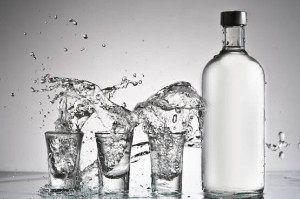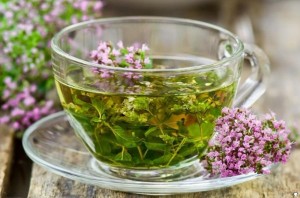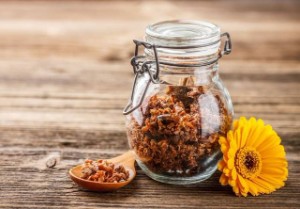How to make horse chestnut tincture for cleaning blood vessels — 3 best recipes
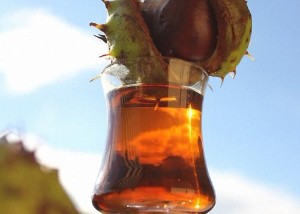 Chestnut is a valuable medicinal plant for the cardiovascular system.
Chestnut is a valuable medicinal plant for the cardiovascular system.
It is used not only in folk medicine, but also in traditional medicine – in any pharmacy you can now buy a ready-made tincture of horse chestnut (this particular type of tree is the most common in the territory of the Russian Federation and other CIS countries). At the same time, not only fruits, but also leaves, bark, and flowers are used to prepare various kinds of decoctions and infusions.
What useful properties does chestnut have and how can it be used to clean blood vessels? All the answers are in the article.
Content
6 useful properties
Chestnut contains a unique set of essential oils, as well as:
- Vitamin A. Is necessary for normal cell division and the formation of cell membranes. It helps to strengthen and improve the elasticity of blood vessels, their purification from cholesterol.
- Ascorbic acid (vitamin C). Comprehensively strengthens the immune system, and also stimulates the oxidation of lipoproteins, cholesterol, contributing to their subsequent breakdown into derivative components.
- Vitamin K. Indirectly improves the biochemical composition of the blood, as it improves the functioning of the kidneys and the entire urinary system. It also prevents the accumulation of sodium in the body (which acts in excess as a toxin).
- Escin (other saponins are also available in small quantities). Eliminates venous congestion, prevents thrombosis. This substance significantly reduces the risk of varicose veins.
- Coumarins. Eliminate increased blood clotting, thereby minimizing the risk of blood clots in the blood vessels.
- Flavonoids. Improve the elasticity of vascular walls, as well as partially dissolve atherosclerotic plaques.
Doctors also claim that horse chestnut extract acts as an anti-inflammatory agent, so it can be used to treat osteoarthritis and prevent stroke (since the risk of inflammation of vascular clusters in the brain is reduced).
3 recipes for homemade infusions
For the preparation of cleansing infusions, flowers, fruits themselves and their skins are mainly used. They contain the most useful substances for the circulatory system. How to make a medicine based on horse chestnut? Here are the 3 most proven recipes.
1. For the prevention of atherosclerosis
To prepare this extract, it is necessary to take mature fruits from the "food" chestnut. It will take about 1 kilogram.
He prepares like this:
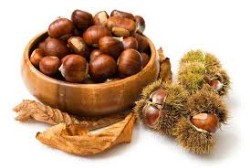
- Cut each fruit into 4 pieces and soak for 12 hours in water;
- Drain the water, add vodka or any other strong alcohol (3 liters of vodka per 1 kilogram of chestnuts);
- Insist for 3 days in the sun, then for another 40 days in a dark place at room temperature (the fruits will become snow–white, and the infusion itself will acquire a yellow tint).
Also watch the tincture recipe video:
Take 1 teaspoon 2 times a day after meals. The course of treatment is 2 weeks, followed by a break of 10 days and a repeat course. It can also be used as a rub for joint pain.
2. To reduce cholesterol
This remedy is suitable both for normalizing cholesterol levels and for strengthening immunity. The only contraindication is the presence of an allergic reaction (flowers are a fairly strong allergen). To prepare the infusion, only the flowers themselves are used, without the so-called "clusters" on which they are located.
He prepares like this: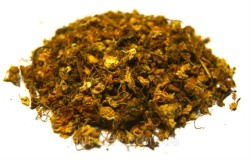
- 50 grams of flowers dry in the oven, then grind in a mortar to a powder state;
- The finished raw materials are put in a glass jar, filled with 0.5 liters of vodka or moonshine;
- Insist at room temperature for at least 4 days (ideally 10 days).
It is not necessary to filter the finished infusion before use – the petals of chestnut flowers contain a fairly large amount of flavonoids, which are just useful for the cardiovascular system.
Drink 20 drops 2 times a day (regardless of the meal schedule). It can be washed down with a small amount of water or mixed with 1 teaspoon of sugar. The course of treatment is a month.
3. For the prevention of varicose veins
This remedy is often recommended for men to prevent varicocele – varicose veins in the groin area (which affect the organs of the reproductive system). It acts as an anti-inflammatory and prevents the formation of plaques.
Is prepared as follows:
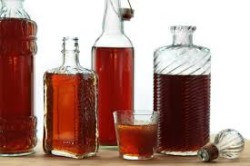
- Collect 25 grams of peel from already fallen chestnut fruits and pass it through a meat grinder (or grate it on a fine grater);
- Add 250 milliliters of vodka;
- Add 2 dried carnation flower buds and 1 teaspoon of pharmacy chamomile;
- Seal the container and leave to infuse for 10 days.
In conclusion, strain the hood.
Take 10-15 drops 2-3 times a day after meals. The course of treatment is 20 days, followed by a break of 10 days.
Pharmaceutical preparations based on it
The pharmacy sells a wide range of certified medicines, which are based on a plant base from chestnut. These are vitamin complexes, ready-made alcoholic tinctures for internal use, and concentrated extracts for external use.
1. The complex "Chestnut + vitamins for blood vessels"
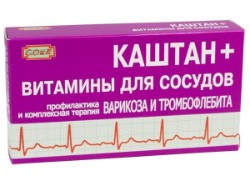 This remedy is now being produced by SOIK LLC, however, the original formulation was developed by Swiss scientists. The drug is a mineral and vitamin complex based on an extract from horse chestnut.
This remedy is now being produced by SOIK LLC, however, the original formulation was developed by Swiss scientists. The drug is a mineral and vitamin complex based on an extract from horse chestnut.
The composition also contains vitamins C, E, PP, B-groups, selenium, chromium, copper - all these elements are just necessary for the comprehensive strengthening of the cardiovascular system and the prevention of atherosclerosis.
This remedy is taken according to the following scheme:
- 1 capsule 2 times a day;
- Children from 6 to 12 years old (only with a direct doctor's appointment) – 1 capsule per day.
The minimum course of treatment is 1 month. Capsules should be consumed right during meals, washed down with a small amount of water. In any case, do not chew.
2. Extract
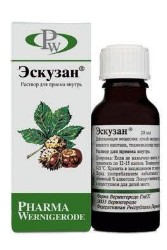 Is available in the form of a ready-made solution. Pharmacies also sell many analogues based on horse chestnut extract, for example, Escuzan.
Is available in the form of a ready-made solution. Pharmacies also sell many analogues based on horse chestnut extract, for example, Escuzan.
According to the instructions for such drugs, the indication for the use of the extract is acute venous insufficiency, atherosclerosis, trophic changes in soft tissues with impaired blood flow.
Take a ready–made solution of 12-15 drops 3 times a day before meals (dissolve in a small amount of water). The course of treatment is 3 months. At the time of therapy, it is necessary to be monitored by a therapist and monitor the biochemical composition of the blood (for this purpose, tests are prescribed every 2 weeks).
3. Wrapping
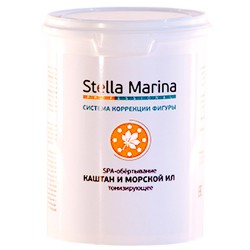 Such tools are used only externally. Their action is based on the ability of coumarins to penetrate through the upper layer of the epithelium and inhibit blood clotting in capillaries and veins.
Such tools are used only externally. Their action is based on the ability of coumarins to penetrate through the upper layer of the epithelium and inhibit blood clotting in capillaries and veins.
Wraps are assigned for varicose veins or to eliminate "vascular asterisks", massive hematomas. One of the most popular chestnut wrap products is Stella Marina. The manufacturer recommends using it only 1 time per week.
Contraindications and warnings
According to medical recommendations, from the use of horse chestnut in the following cases, you must opt out:
- Chronic atonic constipation;
- Increased acidity of the stomach or impaired bile outflow;
- Hypotension;
- Weak blood clotting;
- Unstable menstrual cycle;
- Pregnancy or lactation (breast-feeding).
It should also be borne in mind that the essential oils included in the plant can provoke the release of prostaglandins – these substances stimulate the course of the inflammatory process as a hyperreaction. If there is one, consult an allergist.
In total, chestnut is recommended for use by anyone who wants to get rid of or prevent the development of diseases of the cardiovascular system. The only caveat is not to use the fruits of poisonous tree varieties for making tinctures, as they are quite toxic.

